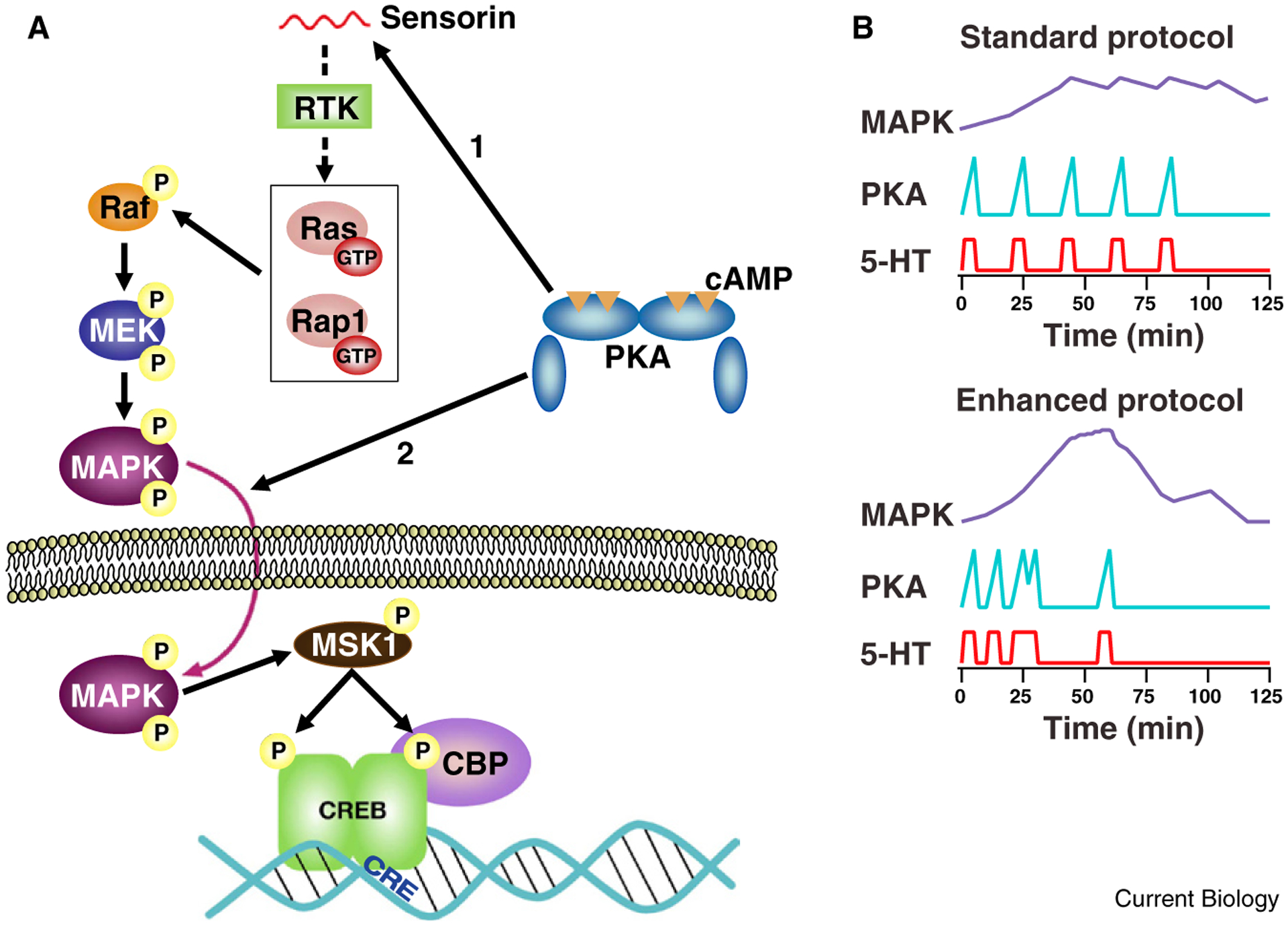Figure 1.

PKA and MAPK signaling pathways activated with enhanced training protocol. (A) Convergence of PKA and MAPK upstream of CREB transcription factor. The cartoon illustrates two possible loci of convergence. Tail shock releases serotonin (not shown), which stimulates adenylyl cyclase, activating PKA. PKA is shown as triggering release of the neuropeptide sensorin from sensory neurons (arrow #1) [7], which acts by binding to a receptor tyrosine kinase (RTK) to activate the MAPK pathway, via either Ras or Rap1. MAPK translocates into the nucleus where it stimulates phosphorylation of CREB by activating MSK1. PKA is also shown enhancing the translocation of MAPK (arrow #2) [6]. (Other mechanisms of interaction between the PKA and MAPK pathways, not shown here, have also been described.) CREB-binding protein (CBP) is recruited by activated CREB; CBP promotes transcription due to it’s histone acetyl transferase activity. (B) Enhanced training results in improved coincidence of activation of PKA and MAPK. Curves are simple schematized examples of activation profiles similar to those generated by the computational model of Zhang et al. [3]. Note, PKA activation is tightly temporally linked to serotonin exposure. MAPK activation develops gradually, peaking at about 45 min. With the enhanced protocol, more powerful peak activation of MAPK is achieved, which is available to interact with PKA activated by the final pulse of serotonin.
